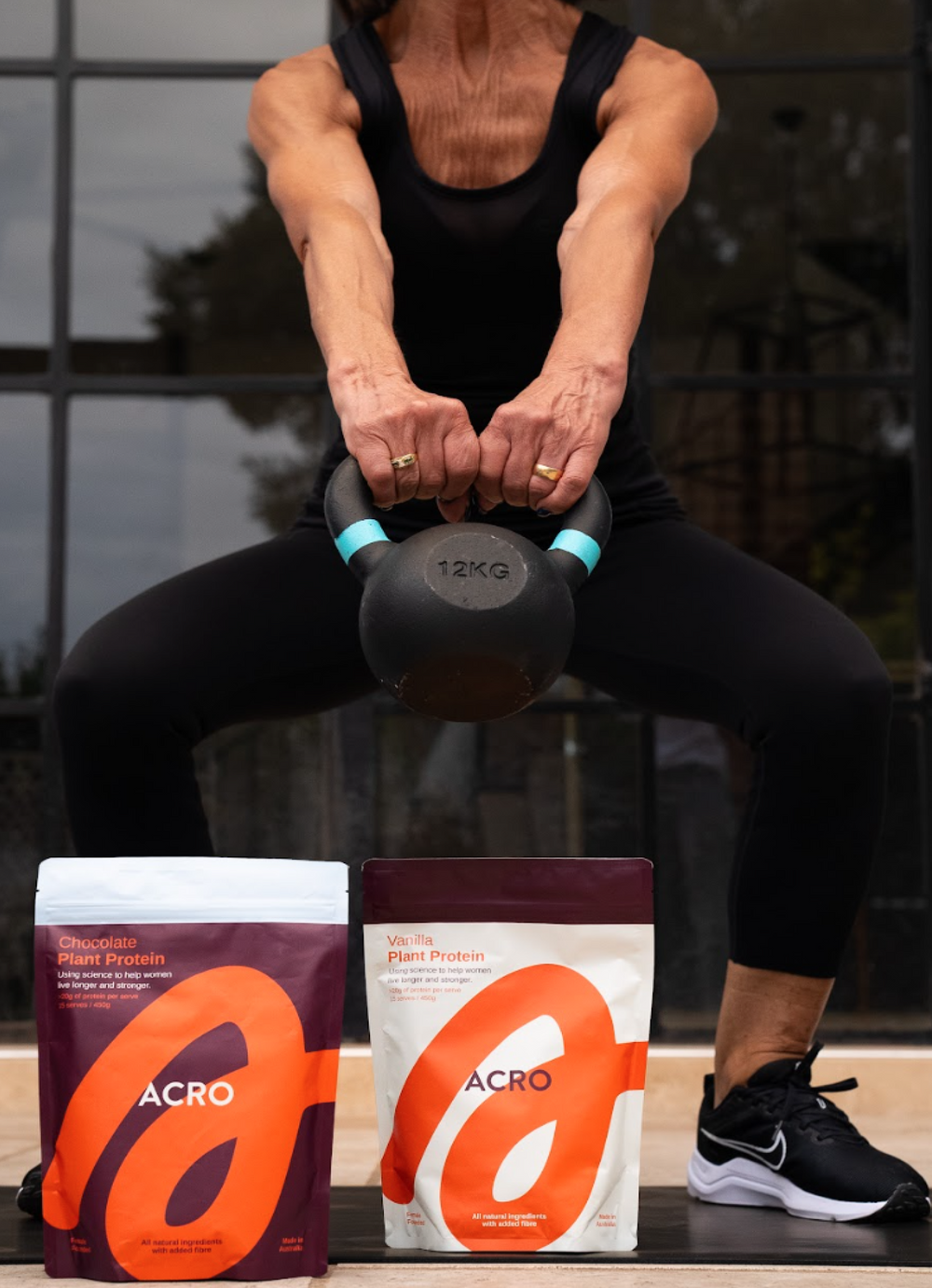Why Protein?
Building the foundations for strength: a pre-requisite for healthy ageing
The reduction of skeletal muscle is one of the most important causes of functional decline and loss of independence into older age. In contrast, maintaining healthy muscle mass is associated with better metabolic health, increased functionality and strength.
Menopause and ageing change our body composition. Our bodies breakdown muscle faster, and have greater resistance to building muscle from the protein we eat.
How to build and maintain muscle mass through midlife
Resistance training
Resistance training uses weights, resistance bands, or body weight to strengthen muscles. By gradually increasing the weight or resistance used, muscles adapt and grow stronger.
Consistency is required for optimal results. Experts suggest training three times per week, focusing on different muscle groups each session.
High protein diet
To reduce the risk of frailty, women should aim for > 1.2g of protein per kg of body weight per day. For a 70kg woman, this means consuming 84g of protein daily (equivalent to 13 eggs)! If you struggle to reach these daily targets using a food-first approach, you may find protein supplementation a delicious and easy solution.
Studies have also demonstrated the positive effect of a high protein diet on achieving a healthy ratio of lean muscle to body fat and maintaining a healthy weight.
Midlife, Menopause and Muscle
When someone goes through menopause, their ovaries have stopped producing oestrogen. Perimenopause is the phase before menopause, when oestrogen levels begin declining. Oestrogen plays an important role in protecting our organs including our muscles, bones, heart, blood vessels, genitourinary tract and brain.
Try out our interactive body map to learn about the long term impacts of low oestrogen and the strategies you can take to protect your health.

Menopause and
Weight Gain
Many women experience changes to body composition at menopause, with a decrease in lean muscle and an increase in fat deposition.
Stubborn, mid-section fat is often reported as one of the most frustrating symptoms of menopause. It is also a sign of increased visceral fat (fat that lines the organs) which increases the risk of cardiovascular and metabolic disease.
Weight, Shape, and Body Composition Changes at Menopause, 2021. Access here: https://www.ncbi.nlm.nih.gov/pmc/articles/PMC8569454/
The Protein
Leverage Effect:
Pioneering research suggests that the solution to this issue may lie in our protein consumption.
When we lose muscle due to menopause, our bodies respond by craving more protein.
If you do not eat enough protein to meet this new, greater need, it is easy to end up responding to hunger by eating more calories from other sources, often carbohydrates and fats.
Increasing protein as a percentage of our daily energy intake can help with weight loss, fat reduction, and muscle maintenance.










